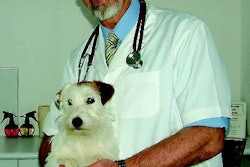The phrase "public relations" was coined by Thomas Jefferson during a presidential address to the US Congress in 1807. That is, if you can believe anything you read on the Internet. (This particular piece of information comes from www.wikipedia.com .)
When it comes to managing major public relations (PR) crises, Johnson & Johnson's handling of the Tylenol tampering incident in 1982 is often held up as the gold standard. (See "Learning from a sad and messy crisis")
But one key element J&J didn't have to factor in back then was the Internet and digital media: the many immediate ways consumers receive and even contribute to news and information today.
Witness the petfood recalls and the constant, intense attention they have received from consumers and the media. That is partially due to the emotions inherent in the situation and the strong connection people have with their pets. But it is also because the second any news - real or perceived - happens, it shows up instantly on computer screens and mobile devices. Not to mention that anyone who has an opinion or story to share can do so for all the world to see on a blog or another form of Internet communication.
Recipe for disaster?
While it's certainly understandable that petfood companies have (as of press time) been very careful about releasing recall-related statements or communicating with the media or consumers, not doing anything may be a recipe for disaster, at least from a PR sense.
As the saying goes, nature abhors a vacuum, and in this case the vacuum, lack of information and communication, is being filled at lightning speed with opinion, emotion and speculation. With a few facts thrown in for seasoning.
Type "petfood recall and PR" into any search engine and you'll get quite a mix. In my search, only a handful of the returns had any direct relation to a petfood company, for example, a press release from a company attempting to disassociate itself and its products completely from recalled ones and from wheat gluten.
I also came across an Advertising Age article describing Procter & Gamble Co.'s newspaper ad campaign aimed at reassuring pet owners about the safety of its petfood products still on retail shelves ( http://adage.com/article?article_id=115908 ).
The rest of my returns were press releases from people who may or may not be experts on animal nutrition, offering tips to consumers on how to safely feed their pets. And then there were the blogs.
Taking basic steps
Love em or hate em, blogs are a fixture of today's communication scene, and they get plenty of hits along with responses of varying relevance and factuality. I found a posting by an editor of the Orlando Sentinel newspaper about the recalls' potential impact on Menu Foods' share price on the Toronto Stock Exchange. The responses ranged from pet owners asking if a particular food was safe to condemnations of the industry to advice from a PR professional, complete with his name and company information.
Despite the blatant self-promotion, I thought his tips were pretty basic and commonsense. And I couldn't help wonder why very few petfood companies have begun implementing any steps like them.
Anyone could read these blog postings and think they all make sense, especially if he or she has limited knowledge of animal nutrition, petfood or the recalls, or has a lot of emotion invested. (That might be an apt description of many pet owners.)
If this is the only "information" the person has, the impression he or she forms of our industry, or your company and products, may not be one that any of us like.

















